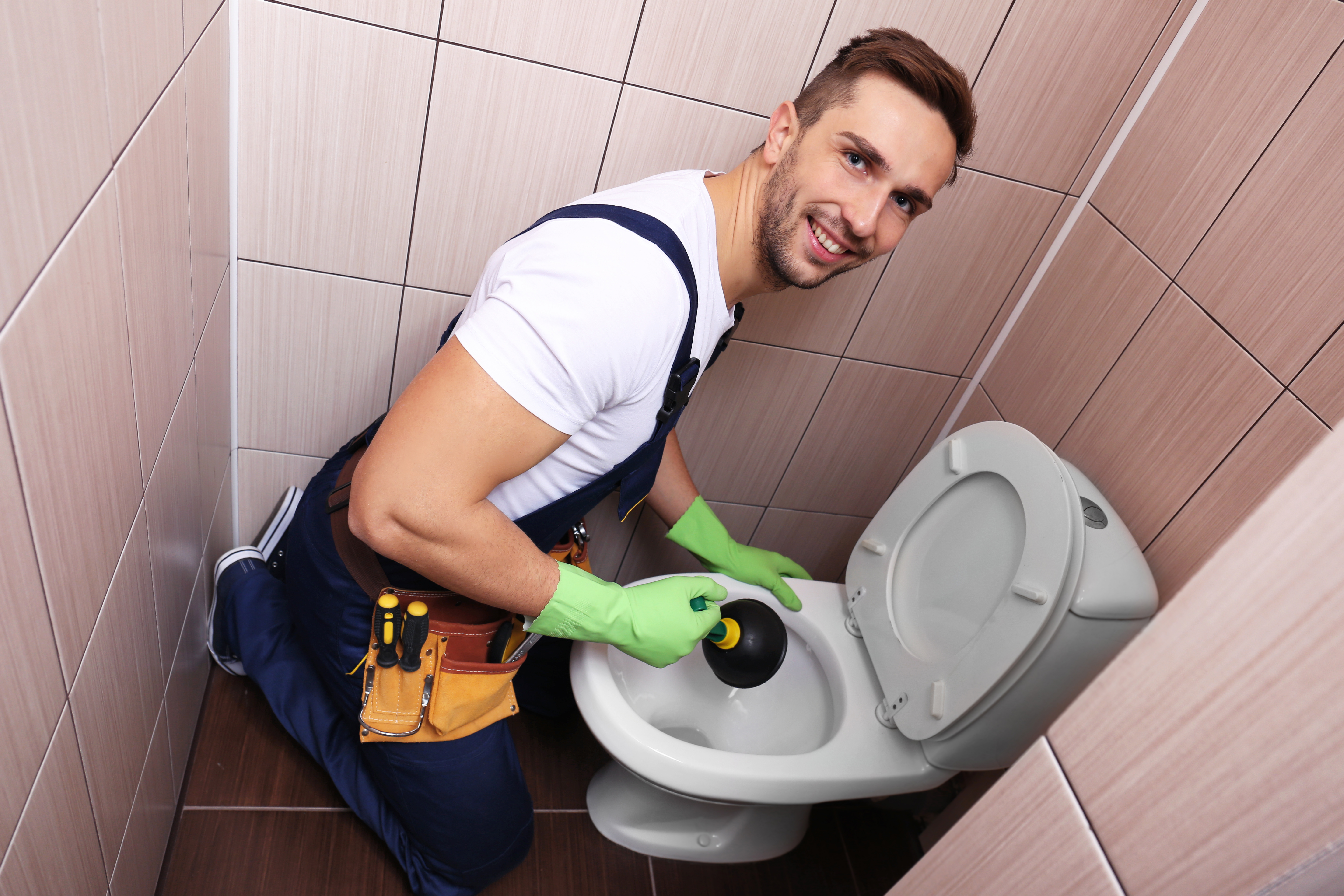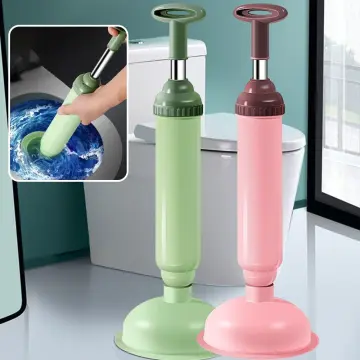Successful Plungers and Drain Cleaner Methods: Key Practices
Successful Plungers and Drain Cleaner Methods: Key Practices
Blog Article
We have stumbled on this post involving Here's How to Correctly Use a Toilet Plunger below on the internet and accepted it made perfect sense to write about it with you here.

Introduction
Correct upkeep of household drains pipes is crucial for avoiding blockages and making sure smooth water circulation. Among the secret tools in every home owner's toolkit is the bettor, together with various drain cleansers made to tackle stubborn blockages successfully. This write-up explores how to utilize plungers and drain cleansers effectively to keep your drains flowing openly.
Section 1: Understanding Bettors
Types of Plungers
There are several kinds of bettors offered, each developed for various kinds of drains pipes and blocks. One of the most typical types consist of cup bettors, flange bettors, and accordion bettors.
Exactly How Plungers Job
Bettors service the principle of developing stress and suction to displace clogs. When correctly used over a drainpipe, they develop a vacuum that can pull out debris or separate blockages.
Selecting the Right Bettor
Picking the right bettor depends on the type of drainpipe and the nature of the obstruction. Cup bettors are perfect for sinks and tubs, while flange plungers are better fit for toilets because of their design.
Usual Blunders with Plungers
Staying clear of these mistakes guarantees efficient plunging: incorrect seal around the drainpipe, not enough pressure, and not clearing bordering debris.
Section 2: Utilizing Plungers Effectively
Prep work
Before plunging, ensure the plunger covers the drainpipe completely and forms a limited seal. Clear any kind of noticeable particles around the drainpipe opening.
Method
Start with gentle diving motions to build suction. Increase stress slowly, utilizing a stable rhythm. Repeat as required till the drain gets rid of.
Repairing Tips
If plunging doesn't work, attempt adjusting the seal, using petroleum jelly for a far better seal, or utilizing a various type of plunger.
Section 3: Understanding Drain Cleansers
Kinds Of Drain Cleansers
Drain cleaners can be chemical or chemical. Chemical cleansers use strong chemicals to liquify clogs, while enzymatic cleaners utilize all-natural enzymes to break down organic matter.
How Drain Cleansers Job
Chemical cleaners react with blockages to liquify them, while enzymatic cleaners break down natural materials like hair and oil without damaging pipelines.
Safety Considerations
Always put on gloves and eye security when making use of chemical drainpipe cleansers. Ensure ample ventilation and follow manufacturer instructions thoroughly.
Eco-Friendly Alternatives
Take into consideration utilizing vinegar and cooking soft drink or enzyme-based cleansers for green options that are much safer for pipes and the environment.
Section 4: Using Drainpipe Cleaners Effectively
Application Strategies
Put chemical cleaners straight into the drainpipe opening. Permit them to help the recommended time before purging with hot water. Chemical cleaners should rest over night.
Safety measures
Avoid blending different kinds of cleansers, as this can produce hazardous fumes. Never utilize chemical cleansers combined with a bettor, as splashing can take place.
Taking Care Of Persistent Obstructions
For relentless blockages, consider using a plumbing serpent or calling a specialist plumbing professional to avoid damage to pipes.
Verdict
To conclude, understanding just how to utilize plungers and drainpipe cleansers efficiently is vital for maintaining healthy and balanced pipes systems. By picking the right tools and techniques, homeowners can tackle small clogs and protect against major pipes concerns down the line.
How To Properly Use A Plumbing Snake To Clear Drains
When any drain clogs in our home arise, we tend to gravitate toward the plunger and little else. In cases where the plunger and its vacuum-created pressure are not able to clear clogs, many immediately move to harmful chemicals or simply call their plumber to fix the issue.
we’re happy to help with all drain cleaning needs and concerns. This includes informing you on a few other home remedies you may have at your disposal for minor to moderate clogs, one of which is the use of a plumbing snake. Many people have never used one of these before – let’s go over the steps to take when your drain clogs and you have a plumbing snake available.
Attempt Plunger Use
The first step here, as we noted above, should indeed be to grab your plunger when you notice a drain clog and attempt to resolve it this way. If you’re unsure how to use a particular type of plunger, our plumbers can answer any questions you have. If this doesn’t do the trick, however, you move on to the snake.
Locate And Prepare Snake
A plumbing snake is a metal or plastic device that’s generally about a quarter of an inch thick. It’s design with significant extensions, meant to reach down into your clogged drain and push the clog out. Snakes also contain drain augers that will latch onto and push stubborn blockages.
If your plunger doesn’t clear a clog, locate your snake and bring it to the drain in question. We also recommend keeping a bucket nearby to collect the clog once you pull it out, plus we’d advise wearing goggles and possibly protective gloves.
Feed Snake
Once you’re ready to go, feed the snake slowly down the drain, using the crank device it comes with to keep it moving until it finds the clog. Once this happens, much of the clog will be latched onto the coil so you can pull it out, while the rest will simply break up and flow downward.
Detach Debris
Remove the snake slowly from the drain, and once you’ve done so, pick off any debris that’s stuck to the coil. This is another area where wearing gloves is a must.
Flush Drain
Finally, take a few minutes to ensure the snake has done its job correctly. If you’ve been using it on a toilet, flush the toilet a couple times and make sure everything flows well. If you’ve used it on a different drain, flush it with some room temperature water.
https://www.mybuddytheplumber.com/blog/how-to-properly-use-a-plumbing-snake-to-clear-drains/

Application Strategies
Put chemical cleaners straight into the drainpipe opening. Permit them to help the recommended time before purging with hot water. Chemical cleaners should rest over night.
Safety measures
Avoid blending different kinds of cleansers, as this can produce hazardous fumes. Never utilize chemical cleansers combined with a bettor, as splashing can take place.
Taking Care Of Persistent Obstructions
For relentless blockages, consider using a plumbing serpent or calling a specialist plumbing professional to avoid damage to pipes.
Verdict
To conclude, understanding just how to utilize plungers and drainpipe cleansers efficiently is vital for maintaining healthy and balanced pipes systems. By picking the right tools and techniques, homeowners can tackle small clogs and protect against major pipes concerns down the line.
How To Properly Use A Plumbing Snake To Clear Drains
When any drain clogs in our home arise, we tend to gravitate toward the plunger and little else. In cases where the plunger and its vacuum-created pressure are not able to clear clogs, many immediately move to harmful chemicals or simply call their plumber to fix the issue.
we’re happy to help with all drain cleaning needs and concerns. This includes informing you on a few other home remedies you may have at your disposal for minor to moderate clogs, one of which is the use of a plumbing snake. Many people have never used one of these before – let’s go over the steps to take when your drain clogs and you have a plumbing snake available.
Attempt Plunger Use
The first step here, as we noted above, should indeed be to grab your plunger when you notice a drain clog and attempt to resolve it this way. If you’re unsure how to use a particular type of plunger, our plumbers can answer any questions you have. If this doesn’t do the trick, however, you move on to the snake.
Locate And Prepare Snake
A plumbing snake is a metal or plastic device that’s generally about a quarter of an inch thick. It’s design with significant extensions, meant to reach down into your clogged drain and push the clog out. Snakes also contain drain augers that will latch onto and push stubborn blockages.
If your plunger doesn’t clear a clog, locate your snake and bring it to the drain in question. We also recommend keeping a bucket nearby to collect the clog once you pull it out, plus we’d advise wearing goggles and possibly protective gloves.
Feed Snake
Once you’re ready to go, feed the snake slowly down the drain, using the crank device it comes with to keep it moving until it finds the clog. Once this happens, much of the clog will be latched onto the coil so you can pull it out, while the rest will simply break up and flow downward.
Detach Debris
Remove the snake slowly from the drain, and once you’ve done so, pick off any debris that’s stuck to the coil. This is another area where wearing gloves is a must.
Flush Drain
Finally, take a few minutes to ensure the snake has done its job correctly. If you’ve been using it on a toilet, flush the toilet a couple times and make sure everything flows well. If you’ve used it on a different drain, flush it with some room temperature water.
https://www.mybuddytheplumber.com/blog/how-to-properly-use-a-plumbing-snake-to-clear-drains/

As an avid reader about How to Unclog Your Sink with a Plunger, I thought sharing that excerpt was sensible. Liked our post? Please share it. Help others discover it. Thank-you for taking the time to read it.
Schedule An Appointment Report this page